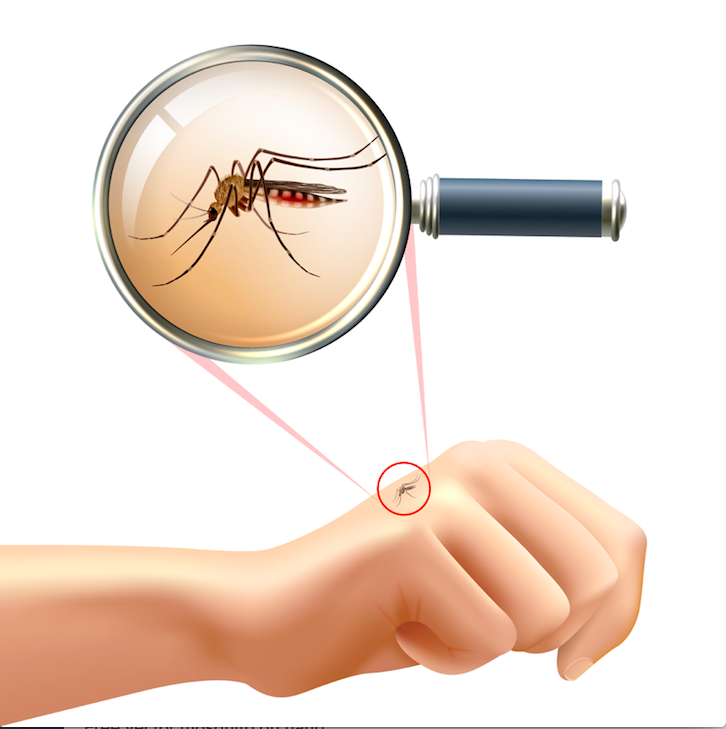Researchers from Indonesia and Australia have developed a molecular barcode and a web-based data analysis tool to identify and track imported cases of Plasmodium vivax malaria. Using a unique molecular identifier, the tool can accurately detect the presence of P. vivax in samples and provide important information for the prevention and treatment of the disease. The web-based platform also allows for efficient data analysis and sharing, enabling researchers and healthcare professionals to collaborate and stay up-to-date on the latest findings in the field.
The fact that the study has also resulted in the creation of a readily accessible tool that non-experts may use to comprehend the causes of infections is remarkable. The ability to access data-generating facilities, in this case, deep amplicon sequencing, will be necessary for the barcode and tool to be translated over the whole world’s P. vivax endemic population. Deep sequencing technologies are still inaccessible to the majority of national public health institutions and malaria control programs.
Additionally, the researchers gave their country of origin a P. vivax genome classifier based on SNP panels. Using HFST and DT techniques, they evaluated the efficacy of a current panel, and a freshly created panel created using training genomic data.
According to recent estimates, malaria infections are on the upsurge, and a growing percentage of cases are caused by Plasmodium vivax, undermining the concentrated efforts made over the previous ten years to stop transmission. These patterns show how urgently new screening methods and a focus on non-falciparum Plasmodium species are required. High levels of human mobility provide a unique obstacle to managing malaria because imported Plasmodium cases can impede local control efforts, increase the likelihood of outbreaks, and propagate antimalarial drug resistance. It is imperative to create technologies that can assist in identifying the patient’s infection source in order to address this problem.
Deciphering Barcode genotyping data through detection frameworks
These molecular tools are specially intended for detection frameworks that utilize sequencing platforms like Illumina or MinION (Oxford Nanopore Technologies), which allow for the simultaneous genotyping of several markers. The informatics tools are intended to let users independently examine and decipher barcode genotyping data produced in their nation or at regional reference laboratories, even if they are unfamiliar with or have no background in genetics or bioinformatics. In order to handle real-world malaria samples, such as polyclonal infections and samples with inadequate data due to genotyping errors, informatics tools have been developed.
Mapping novel SNP panels
The study’s main goal was to create molecular tools that might be utilized in population-based monitoring frameworks to locate and map imported P. vivax infections. With strong country classification performance, three novel SNP panels (GEO barcodes) were shown to be able to differentiate imported P. vivax infections in a variety of endemic settings. When there were no missing data, the most frugal panel, GEO33, demonstrated strong country classification. It may be cost-effectively added to the 38 bi-allelic, assayable Broad barcode SNPs (BR38) to increase prediction power in samples with intermediate degrees of missing data. In the majority of endemic regions, the GEO33 + BR38 barcode combination produced reliable country categorization, even when the percentage of missing data increased to 30%.
However, the GEO33 + BR38 barcode’s ability to forecast between Cambodia and Vietnam was only moderate, which is most likely due to the frequent human and P. vivax gene flow that occurs over this border.
Though genome-wide data will not resolve infections across nearby nations in some geographic areas where national boundaries have little to no impact on the movement of parasite genes, in these areas, the usefulness of classifying infection origins by country may be restricted.
Therefore, it could be helpful to support the case for cross-country joint efforts to combat vivax malaria by utilizing genetic data to show that the parasites from different sides of the border constitute a single homogeneous population. Additionally, the methods outlined in this paper can be modified to define additional demographic borders that may be significant to NMCPs.
The molecular P. vivax geographic categorization tools made available are intended to enable users in places where malaria is endemic to contrast local genotyping data with worldwide accessible databases.
Amplicon-based sequencing for targeted genotyping of malaria parasites
Other surveillance markers will be coupled with amplicon-based geographic barcode sequencing. Amplicon-based sequencing may be used at moderate to high throughput with excellent accuracy and sensitivity employing highly parallel sequencing systems, including the most recent Illumina sequencers. Due to the adaptability of these platforms, Single Nucleotide Polymorphism (SNP) barcodes may be improved iteratively, offering a low-cost genotyping method that can be used for population-based genetic monitoring. This barcode was designed to make fingerprinting and geographic assignment easier, however, there are currently no experimental tests for it, and therefore it can only be used in simulations. Furthermore, to determine the nation of origin, Principal Components Analysis and other visual techniques have been used in every geographic barcoding study of malaria conducted so far.
While this method has some value, it is somewhat subjective and does not address the demands of translational end users like National Malaria Control Programs (NMCPs), which could lack the expertise in genetic epidemiology or bioinformatics needed to produce and understand these plots.
Summarizing data analysis methods
A novel framework for identifying P. vivax geographic barcodes (i.e., marker selection) and an online, open-access informatics platform for end users to examine data produced by the barcode were the project’s two main objectives.
Three crucial phases were included in the process:
- Data preparation to create a dataset with the ideal mix of samples, SNPs, and no missing data (i.e., no genotype fails),
- Selecting potential SNP panels for the classifier created in this work (a Bi-Allele Likelihood, BALK classifier) utilizing Decision Tree and HFST techniques; and,
- Comparative analysis of potential SNP panels, evaluation of the effect of missing data (i.e., genotyping failures), and evaluation of the prediction accuracy using a separate dataset.
The next step was to create an open-access, online informatics platform and equip it with BALK classifiers that had been trained on candidate SNP panels. The Supplementary Approaches offer a more thorough explanation of the methods.
Potential SNP selection
With less than 60 SNPs in these panels, the goal was to find the most frugal SNP panels for country-level categorization. This criterion for the new SNP panels was based on a number of factors. A maximum of 100 SNPs in aggregate (across the new SNP panels and previously disclosed Broad barcode, i.e., BR38) were determined to be a practicable threshold for a geographic barcode for P. vivax in accordance with the multiplexing characteristics of the Illumina platform, taking primer, library creation, and sequencing costs into account, as well as the practical problems of producing PCR pools throughout significant numbers of primers.
Conclusion
The study’s primary concerns were to provide a framework for finding P. vivax molecular markers for determining the nation of origin, identify and characterize imported P. vivax cases and to create an online, open-access informatics platform for end users to assess data produced using the markers. In order to help researchers and NMCPs make strategic decisions about where and how to implement malaria control treatments, we want these new molecular and informatics tools to facilitate the creation of evidence.
Article Source: Reference Paper | VivaxGEN-geo Web Service
Learn More:
Top Bioinformatics Books ↗
Learn more to get deeper insights into the field of bioinformatics.
Top Free Online Bioinformatics Courses ↗
Freely available courses to learn each and every aspect of bioinformatics.
Latest Bioinformatics Breakthroughs ↗
Stay updated with the latest discoveries in the field of bioinformatics.
Riya Vishwakarma is a consulting content writing intern at CBIRT. Currently, she's pursuing a Master's in Biotechnology from Govt. VYT PG Autonomous College, Chhattisgarh. With a steep inclination towards research, she is techno-savvy with a sound interest in content writing and digital handling. She has dedicated three years as a writer and gained experience in literary writing as well as counting many such years ahead.







